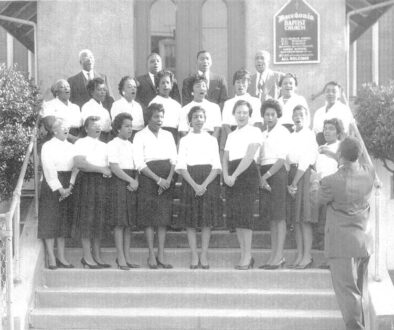Adolphe Sax and his invention: the saxophone
A saxophone has a conical metal (originally brass) tube with about 24 openings controlled by padded keys; the mouthpiece is similar to that of a clarinet. Two octave key vents allow the instrument to overblow to a higher register at the octave. Except for the sopranino and one form of the B-flat soprano saxophone, built straight like a clarinet, saxophones have an upturned lower end and a detachable crook, or neck, at the upper end. – Encyclopedia Brittanica
Adolphe Sax (1814-1892) would not have invented the saxophone had he succumbed to any of his numerous near-death accidents, mishaps, and misadventures as a child in Belgium. Jazz, dance music, rock and roll, vaudeville, and brass, military and marching bands — all of these became what they are in part due to Sax’s invention of this unusual woodwind instrument originally made of brass, and it only came about due to Sax’s curious childhood ability to cheat death.
“As a boy in early 19th century Belgium, Adolphe Sax was struck on the head by a brick. The accident-prone lad also swallowed a needle, fell down a flight of stairs, toppled onto a burning stove, and accidentally drank some sulfuric acid. When he grew up, he invented the saxophone.“
– Time magazine Sept. 11, 1972
Sax was born in Dinant, Belgium on November 6, 1814, the eldest son of Charles-Joseph Sax (1791-1865), builder of instruments and owner of a factory for wind instruments in Brussels.
Adolphe Sax was an entrepreneur, a creative genius. He started learning the clarinet when he was around 14 or 15 years old, according to Jo Santy of the Museum of Musical Instruments in Brussels, in “Meet the ‘dangerous Belgian’ who invented the sax,” by Clark Boyd. He improved the instrument, changing the bore (the cylindrical hole from mouthpiece to flute) and exact locations of the holes to make it sound better. Then the talented young Sax set out for Paris in 1842, with an aim to introduce a whole new range of instruments to the French army, a huge market at the time.

He borrowed money, built a workshop, and started making a range of what he called saxhorns. These would later become famous as things like the flugelhorn, the euphonium, and the bass tuba, according to Santy.
In 1846, Sax unveiled a patent for something he’d been working on for a few years called a saxophone. It was part clarinet and part ophicleide, an older keyed brass instrument.
“The first patent shows the mouthpiece of the clarinet, a detailed drawing of an ophicleide, and then the detailed drawing of the baritone saxophone, with next to it, rough sketches of the smaller versions up until the soprano. In rough sketch, the whole family is there,” Santy explains.
As biographer Albert Remy describes it, Sax’s adult life in Paris was a prodigious, tormented existence darkened by dire experiences and upheld with courage and fortitude.
“It is true he was the victim of crooks and slanderers, of money lenders, of jealous competitors, venomous critics and mediocre musicians,” said Leon Kochnitzky in his 1949 biography, Adolphe Sax and His Saxophone. “It is also true that he was often deceived by the friends he had helped and disavowed by those very protectors who … had been among the first to give praise and recognize him in his tribulations. There was also a kind of fatality that dragged him into quarrels and conflicts, into lawsuits and polemics. Sax, like Beau Marche in the 18th century, like Whistler in the later 19th century, had exceptional gifts for the gentle art of making enemies.”
Yet Sax always found friends and admirers, partisans and even devotees, Kochnitzky notes.
“Berlioz, Meyerbeer, Rossini, King Louis Philippe and Napoleon III were among his constant supporters. … He was honored with medals and decorations and more than once he won his lawsuits, which he was never rid of.”
Classical composer Hector Berlioz wrote approvingly of the new instrument in 1842 but despite his support, saxophones did not become a standard part of the orchestra. Their ability to play technical passages easily like woodwinds yet project loudly like brass instruments led to their inclusion in military bands in France and elsewhere.

As the musical era of vaudeville and jazz evolved into the early 20th century, the saxophone came to America and took its place in big-band jazz music and as a solo instrument.
“Most authors agree that the saxophone was a late addition to jazz,” according to Kochnitzky. “As Mr. Sidney Finkelstein puts it, ‘The saxophone figured little in the (early) New Orleans small bands. … It was with the rise of the large band, however, that the saxophone became a central instrument of jazz. The alto, tenor and baritone saxes filled the same role as the quartet of strings in the rise of the symphony orchestra, a body of instruments, homogeneous and tone, which could form the harmonized basis of the musical structure. And with the growing importance of the saxophone in jazz, the instrument developed a solo style as well.’”
It was the saxophone’s incomparable expressive qualities and the beauty of its sound that French composer Hector Berlioz wrote in an 1851 letter as having great potential for the orchestral music of the 19th century, that instead would eventually make the saxophone an integral part of the 20th century jazz musical tradition:
“When played by a skilled performer… it can in slow movements vie with the best singers. The saxophone sighs and moans and dreams. It can render a crescendo and it can weaken its voice to a thin whisper—the echo of an echo.”



